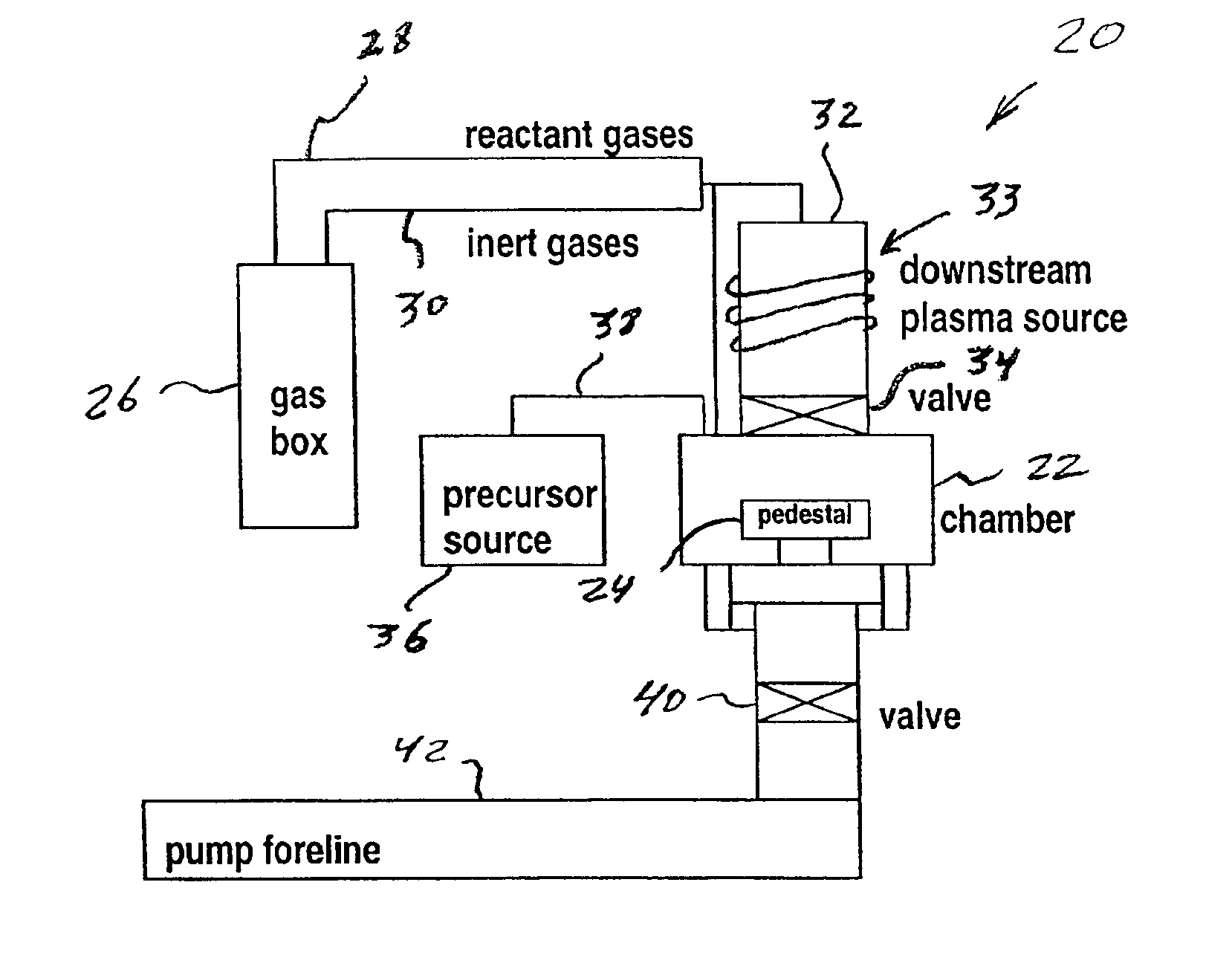Methods of forming tungsten nucleation layer
a nucleation layer and tungsten technology, applied in the direction of polycrystalline material growth, crystal growth process, chemically reactive gas, etc., can solve the problems of high directional bombardment, uneven nucleation, and relative difficulty in getting tungsten to deposit on the substrate, so as to eliminate the nucleation delay
- Summary
- Abstract
- Description
- Claims
- Application Information
AI Technical Summary
Benefits of technology
Problems solved by technology
Method used
Image
Examples
Embodiment Construction
[0021]FIG. 3 is a schematic diagram of a chemical vapor deposition (CVD) reactor 20 in which the method of this invention can be performed. CVD reactor 20 includes a reaction chamber 22 in which a pedestal 24 for holding a semiconductor wafer or other substrate is contained. Reactant gases and inert gases are fed into chamber 22 from a gas box 26 through gas lines 28 and 30, which connect to a downstream plasma source 32. Downstream plasma source 32 is connected to chamber 22 via a valve 34. A tungsten-containing gas such as tungsten hexafluoride (WF6) originates from a precursor source 36, which connects to chamber 22 via a line 38.
[0022]Downstream from chamber 22 is a valve 40, which leads to a pump foreline 42. An exhaust pump (not shown) connected to pump foreline 42 is used to remove gases from chamber 22.
[0023]In the process of this invention, a semiconductor wafer or other substrate is placed on pedestal 24. The pressure in reaction chamber 22 is set at 0.3-40 Torr and temper...
PUM
| Property | Measurement | Unit |
|---|---|---|
| temperature | aaaaa | aaaaa |
| pressure | aaaaa | aaaaa |
| temperature | aaaaa | aaaaa |
Abstract
Description
Claims
Application Information
 Login to View More
Login to View More - R&D
- Intellectual Property
- Life Sciences
- Materials
- Tech Scout
- Unparalleled Data Quality
- Higher Quality Content
- 60% Fewer Hallucinations
Browse by: Latest US Patents, China's latest patents, Technical Efficacy Thesaurus, Application Domain, Technology Topic, Popular Technical Reports.
© 2025 PatSnap. All rights reserved.Legal|Privacy policy|Modern Slavery Act Transparency Statement|Sitemap|About US| Contact US: help@patsnap.com



